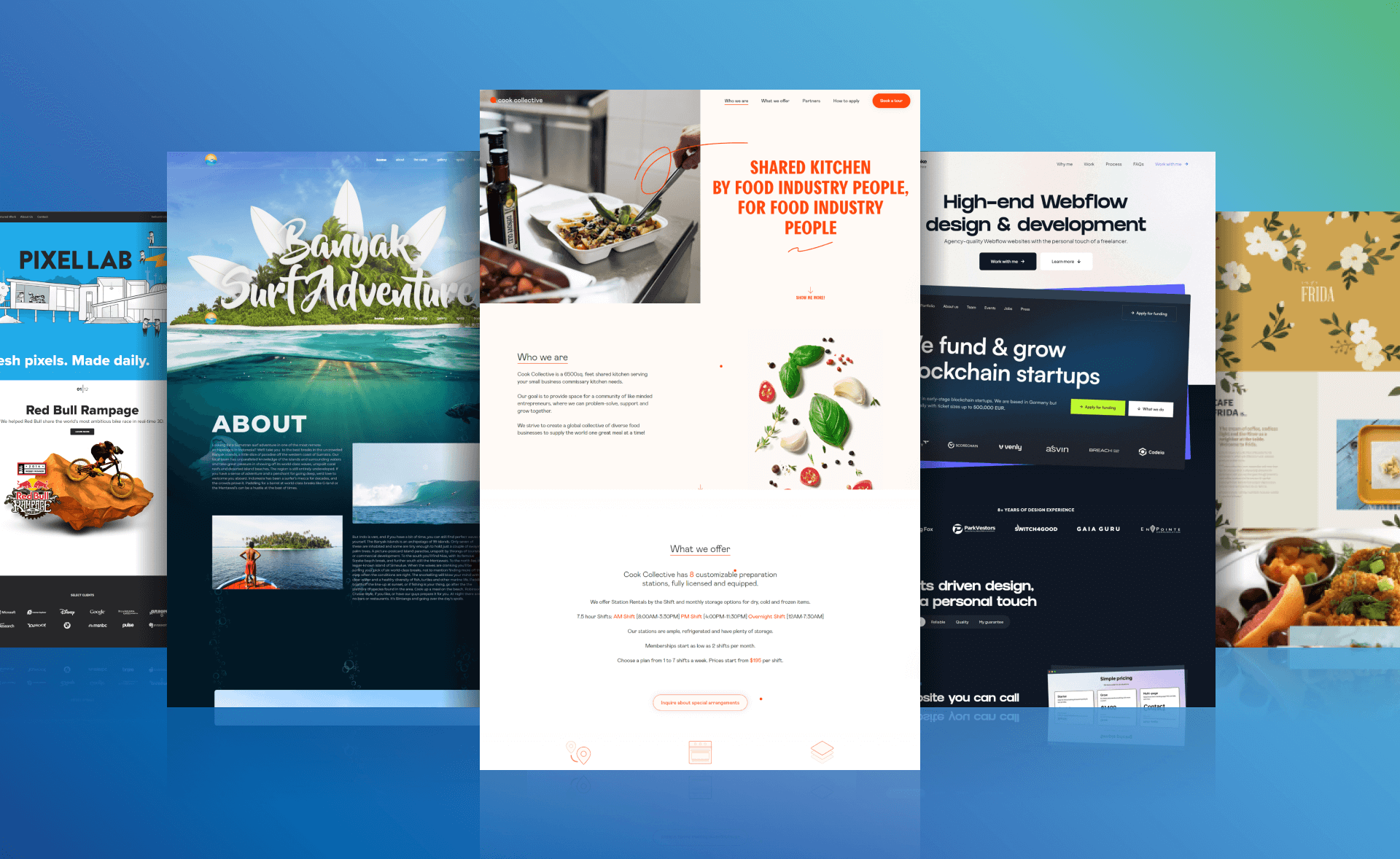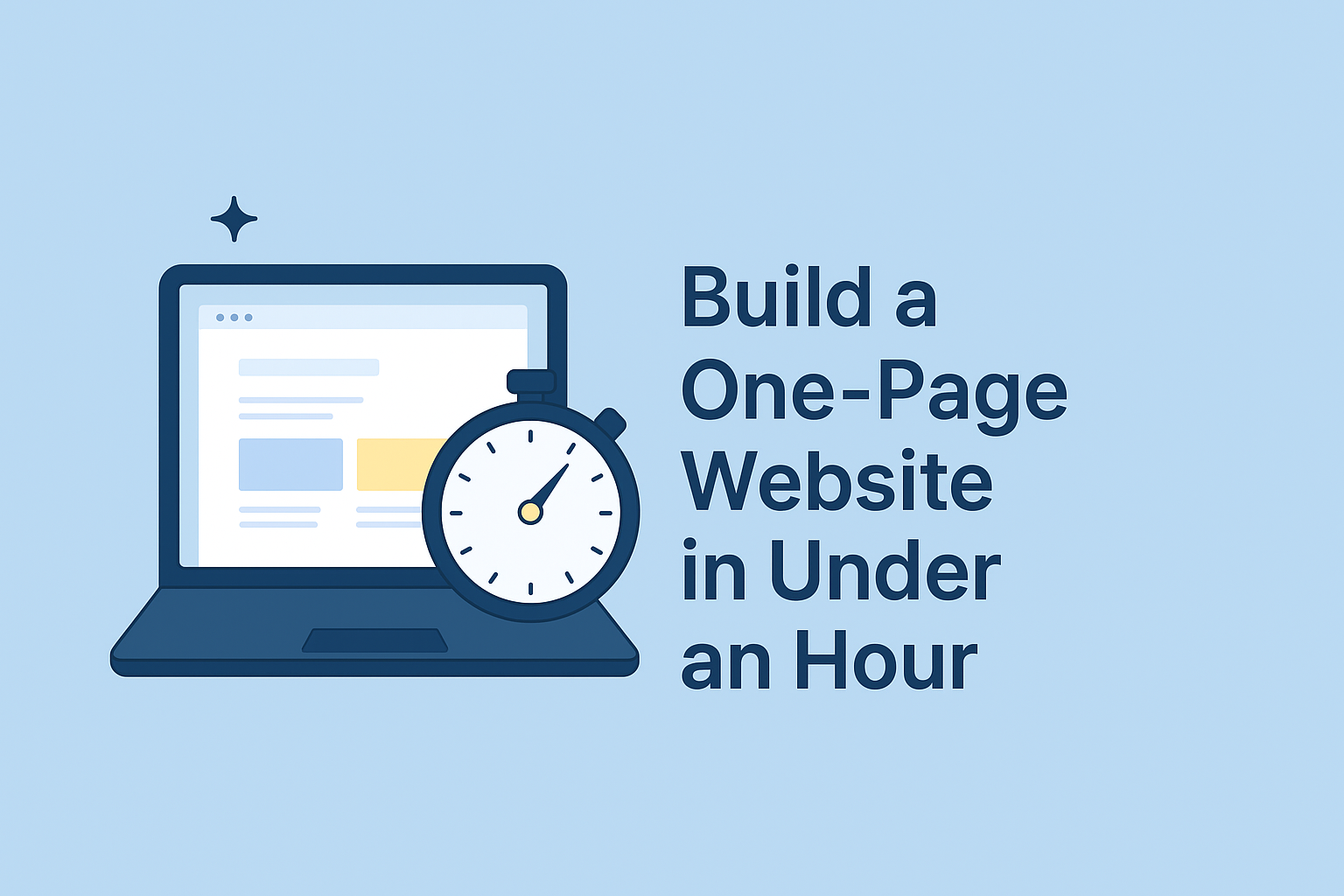Can you really build a website in under an hour? That is a big question! Many new developers and beginners will doubt this claim. But the truth is that it is very possible because there are lots of tools available these days to make it happen. Creating these is only for simple and focused websites.
By creating these types of websites, you will not become the next Facebook or Amazon. You can only make a basic site that serves a single purpose.
In this article, you’ll learn which tools can help you build a website in minutes, how to follow a step-by-step process, and when this approach makes sense for your needs.
What Counts as a One-Page Website?
A one-page website contains all the content on a single scrolling page. It has sections like About, Services, and Contact that visitors access by scrolling down rather than clicking to new pages. Good examples include personal portfolios, event pages, or local business sites.
These sites work well for presenting basic information in a clean format. They don’t include user accounts, shopping carts, or complex databases. Think of them as digital business cards or brochures rather than full applications. They serve a specific purpose without extra features that take time to create.
Tools That Make It Possible
Several platforms let almost anyone build a website in minutes without coding knowledge:
Website builders:
- WordPress.com offers pre-made themes with easy editing options
- Squarespace provides beautiful templates for beginners
- Carrd.co specializes in quick and attractive one-page sites
For those who know some code:
- Bootstrap templates can speed up development with ready-made components
- Next.js starter kits can help create fast-loading pages with good SEO
Many professional developers use these same tools to save time. They reuse these templates and components to make their work easier. You don’t have to start everything from scratch.
Building a Website in Under an Hour

Step 1: Decide Your Goal (5 minutes)
First, you need to decide why you are creating this website. You should pick one clear purpose. Is it for showcasing your work, promoting an event, or sharing contact details for your business? A single goal is important because it will keep your project focused and achievable.
Step 2: Pick Your Tool (5 minutes)
Next, you need to choose the right platform. Choosing should be based on your skills. Complete beginners should try Carrd or Squarespace. Those with basic HTML knowledge can try WordPress. If you are a developer, you can also use code-based solutions for more control.
Step 3: Choose a Template (10 minutes)
You can also browse for templates that match your goal. Don’t waste time looking at every possible option. Pick something close to what you need and move forward. You can always change it later.
Step 4: Customize Content (25 minutes)
This part takes the most time. Add your text, replace sample images, and fill in contact details. Focus on quality content rather than perfect design at this stage.
Step 5: Tweak Design (10 minutes)
Here you can adjust colors to match your brand. You can also change fonts if needed. Also, make sure everything looks good on mobile phones, too. Please keep it simple because trying to make everything perfect will simply eat up your hour quickly.
Step 6: Publish (5 minutes)
Connect to a domain name if you have one or use the free address provided by your platform. Click publish, and your site goes live!
Pros and Cons Of a One-Hour Website
Quick websites work great for:
- Testing new business ideas before investing more money
- Creating an online presence for local businesses
- Setting up event pages that only need to exist for a short time
- Personal portfolios for job hunting
They’re not good for:
- Online stores with many products
- Sites needing user accounts and logins
- Projects requiring custom databases or applications
- Businesses planning major growth
Speed vs. Quality
Building fast comes with trade-offs. Templates and builders make it possible to create something basic quickly, but customization takes more time. The real work often starts after launch, like maintaining, updating, and improving your site.
Professional developers bring value through security knowledge, performance optimization, and custom features that template sites can’t offer. They’re worth hiring when your needs go beyond the basics.
Remember that many successful businesses started with simple websites. You don’t need everything perfect from day one. The most important step is getting started, and now you know you can build a website in minutes rather than weeks.

